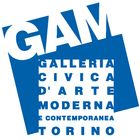From 4 April to 10 September 2023

GAM - Modern Art Gallery of Turin
Via Magenta, 31, Turin
Closed today: open tomorrow at 10:00
Verified profile
The GAM - Galleria Civica d'Arte Moderna e Contemporanea of Turin continues the survey of its heritage by dedicating a chapter to Italian sculpture between 1940 and 1980 with an exhibition that presents 50 works created by 40 artists active during this period: forty years marked by formidable changes and strong stylistic shocks both from the point of view of the subjects and of the techniques, and which assigned a new role to sculpture.
The rich collection of the GAM, as well as the works of sculpture acquired over time by the museum, has been able to count over the years on the decisive role of the Guido and Ettore De Fornaris Foundation and the CRT Foundation for Modern and Contemporary Art which have contributed, with important acquisitions, to increase collection.
The itinerary on display begins with the surprising comparison between the female figures of the Portrait of Eva by Edoardo Rubino, sculptor of the Savoy family and Senator of the Kingdom, and the implosive expressionism of La pazza by Sandro Cherchi, and then continues by recalling the many variations of sculpture informal Italian. This first part attests how, around 1945 and in the following years, with few exceptions, sculpture begins to face a series of major turning points: it tries to get out of a dimension or a thought of monumental, or ornamental, or of both celebratory and private portraiture, to approach new subjects and experimental techniques. To illustrate the new course of sculpture of this period, in addition to Cherchi and Giuseppe Tarantino there are the terracottas of Leoncillo, the dynamic bronzes of Umberto Mastroianni and Pietro Consagra, the irons of Franco Garelli, Nino Franchina, the assemblages of Ettore Colla . At the same time, the dramatic wooden group of Miracle (Holocaust) by Marino Marini and the large metal Spatial Concept by Lucio Fontana stand out, which are counterbalanced by the ceramic Little Women by Fausto Melotti.
The sixties are represented, among others, by works by Giuseppe Uncini, Nicola Carrino, Pietro Gallina, Mario Ceroli, with works that experiment with heterogeneous materials. With his nature carpet La Zuccaia from 1966, Piero Gilardi - who recently passed away and to whom the GAM wants to pay an affectionate homage - he arrives at an unprecedented soft sculpture, in colored polyurethane foam, with which he deals with the theme of nature/artifice and at the same time denounces the commodification of the environment. With obvious reasons, the binomial art/nature is more than addressed by the protagonists of Arte Povera: from Lavorare sulle Alberi, Alpi Marittime by Giuseppe Penone, to Senza titolo by Giovanni Anselmo, up to the chemical-physical processes proposed by Gilberto Zorio.
Opening hours
| opens - closes | last entry | |
| monday | Closed now | |
| tuesday | 10:00 - 18:00 | |
| wednesday | 10:00 - 18:00 | |
| thursday | 10:00 - 21:00 | |
| friday | 10:00 - 18:00 | |
| saturday | 10:00 - 18:00 | |
| sunday | 10:00 - 18:00 |